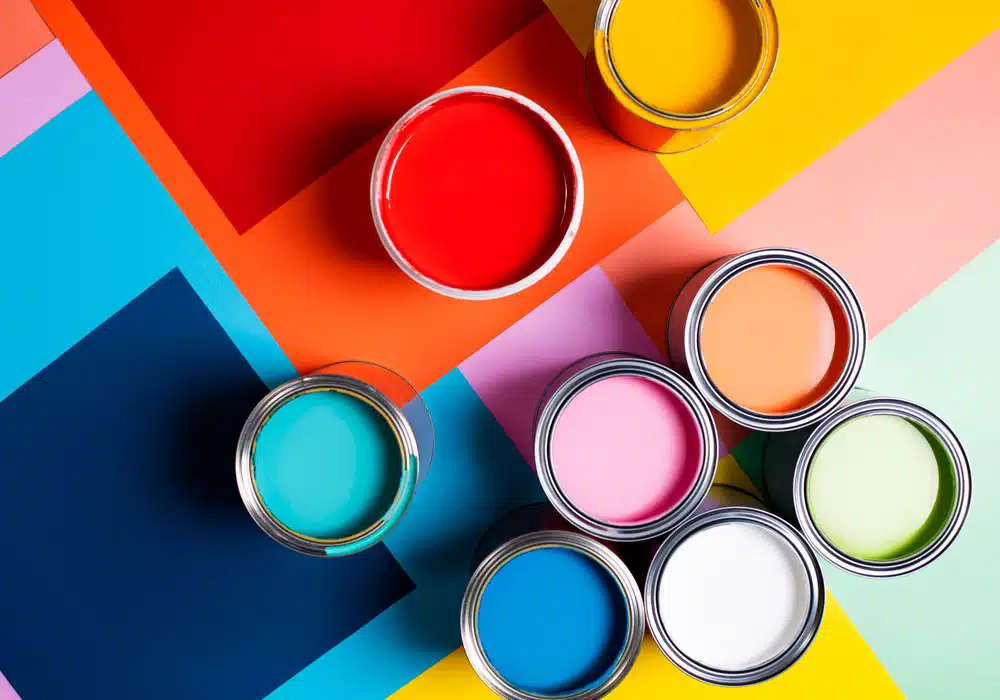Related content
About paint

Over the past three decades, the coating industry has undergone a significant transformation in terms of coloring methods and timeframes.
Over the past three decades, the coating industry has undergone a significant transformation in terms of coloring methods and timeframes. There is a noticeable distinction between the application of industrial coatings and construction coatings.
Choosing the right building coatings involves considering various factors, and one of the crucial aspects to take into account is paint. Factories typically produce a variety of paints within the s’50 and s’60 range, but this may not be sufficient. The popularity of general- purpose paint, available at local DIY stores and contractor centers, is no surprise. Many people prefer to have their paint customized with unique colors when they make their purchase. All of the containers stored in the retailer’s warehouse for painting, except for the sample containers (2-4 OZ), are made with white pigment. The concept of coloring at the time of sale is not focused on achieving an industrial market standard, but rather on catering to the diverse preferences within the industrial market when it comes to color choices. In the industrial sector, the choice of paint is influenced more by the need to meet efficiency standards and cater to special applications, compared to the construction sector. Typically, the selection of industrial paint is based on the coating’s “factory gloss” when it is produced. Even in this case, the selection of pre-painted covers is quite limited, with only a few shades available. The number of standard glosses offered in an industrial coating system is typically limited to 30 to 50 colors. This is significantly fewer compared to a construction system, which offers 1500 colors or more. Coating formulations typically undergo a two- stage development process. The process begins with the development of a colorless coating, followed by an examination of how to selectively add color to certain areas. Therequirement to paint a portion of the coating is typically indicated in the instructions, which have no impact on its performance properties. The colors commonly used in the industrial market are typically darker in color and are often chosen by customers based on their specific preferences. Examples of such colors include Caterpillar Yellow, Ford Blue, and John Deer Green. Typically, these coatings are applied by using paste or pigment powder. There are a variety of ingredients available for formulators to choose from. A common method involves directly dispersing pigments such as white pigment, iron oxides, and fillers. The dispersion of these three pigments is cost-effective and technically feasible, as they possess strong coloring abilities and can be easily dispersed. Conversely, costly pigments are frequently applied as pre-dispersed pastes. This raises the cost and makes it more difficult to develop and improve the coloring process that uses these pigments. The pigment paste is typically mixed and prepared with a specialized resin to ensure the desired consistency is achieved. Therefore, a variety of pigment pastes are required to fulfill the diverse coloring requirements. It is important to note that coating manufacturers often utilize various groups of resins in their formulations. On average, each type of coating produced requires around 10 to 12 pigment pastes to meet color requirements. Using a specific pigment paste that is compatible with multiple resins can help reduce the number of pigment pastes needed. For example, you would only need one pigment paste for both alkyd and polyester. For this particular type of mixing, it would be necessary for a consumer of the resins in the table above to have around 66 to 77 pigment pastes in order to achieve a wide range of 147 colors. A small coating manufacturer may opt for a more limited color range.
The use of pigments will result in extra expenses on top of the initial purchase price, which include:
- Absolute high cost of paste storage and working capital
- Pigment particles may aggregate or sediment, leading to a loss of paste stability
- When the entire container is not utilized, the loss of solvent can alter the viscosity
and color of the paste - The use of incomplete containers can lead to the development of fragmented dried layers in the coating that may not dissolve once more; when the coating is applied, there is a possibility of spots and stains appearing in the coating or the need to filter the pulp to remove any contaminants
- The possibility of increasing viscosity or gelling
- Excessive purchase of lack of long-term stability
The production of priming paint using pigments has several drawbacks, including a powdery and dusty texture, challenges in dispersing the pigments, and overall instability. Industrial formulators often turn to pastes to achieve stable performance and easy mixing when facing these challenges. The inclusion of pastes in the formulation is crucial for ensuring optimal results. It is important to carefully consider the amount of solvent used in these pastes to achieve the desired outcome. The variations resulting from the solvent quantity raise concerns regarding paste efficiency.
The use of base solvent pastes is limited due to environmental pressure to reduce or eliminate volatile solvents in coatings. Building coatings aim to eliminate volatile components. In the industrial sector, avoiding complete removal is preferred because it helps maintain the desired properties. Powder dispersions have been introduced to the market to address these concerns. The powders are free of solvents and are dispersed in a variety of resins.
Multipurpose pigments, an option for coloring Recently, a novel category of pigments known as multipurpose compounds (MFP) has emerged in the market. Typically, these pigmented compounds contain approximately 50- 58% of the coloring component. The remaining elements in the composition consist of resin, filler, pigment, or a combination of these. When it comes to compatibility with resins
and dispersants, multifunctional pigments are more desirable than “dry dispersions”. There are currently a total of 13 inorganic pigments and 11 organic pigments that are used as multipurpose pigments in water-based coatings. Formulations suitable for application in industrial and construction coatings have been provided for these pigments. Aside from its application in water-based coatings, it is also advisable for utilization in alternative varnishes and for the preparation of pigments in public spaces. Transparent iron oxide has received significant attention in this context. Dispersing transparent iron oxides poses a challenge, as achieving both high transparency and stability in them is exceedingly difficult. Presently, a few manufacturers have provided a restricted selection of pigments in water-based and solvent-based polyurethane resins.






